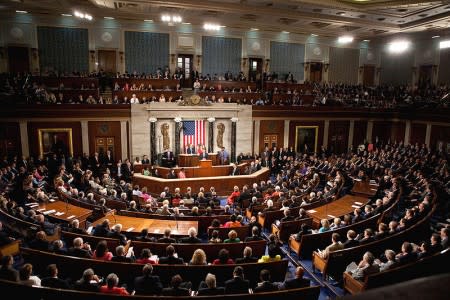Syria vote added to September log jam in Congress
President Barack Obama’s decision to ask for congressional approval about actions against Syria will add another obstacle to Washington gridlock in September.
Senate Majority Leader Harry Reid now expects a formal vote on Syria to take place during the week of September 9- the first week Congress is back from a month-long recess.
About 100 members came back early for a White House briefing over the Labor Day weekend about a potential limited missile strike against the Assad regime in Syria, which the Obama administration and the Arab League accuse of using nerve gas to kill its own citizens.
However, some big United States allies and the United Nations Security Council don’t support the attacks. The lack of coalition partners takes away one key justification that the White House believes it needs to strike at Assad.
The White House bowed to congressional criticism about launching the attacks without its approval, even though past Presidents have argued they don’t need to ask Congress before using military action as a foreign policy tool.
In the Constitution, Article I, Section 8, says that Congress has the power to declare war and raise and fund the Armed Forces, but Article II, Section 2, names the President as the Commander in Chief.
The War Powers Resolution, an act passed by Congress in 1973, was an attempt to define the roles of Congress and the President in starting and finishing military actions. Since then, most Presidents have believed the Resolution was illegal, that they have acted within its rules, and they have the power to act outside the Resolution.
For example, in March 2011, President Obama approved the use of military force in Libya, explaining that the U.S. military action came in support of a United Nations Security Council Resolution. The Justice Department followed with an opinion that “prior congressional approval was not constitutionally required to use military force in the limited operations under consideration.”
For now, a favorable congressional vote seems in doubt, and the political reality is that Congress will devote much public time to Syria in September after it delayed many other key domestic policy decisions before its August recess.
Defining the Log Jam
Last month, we looked at the dance card for Congress it faced in September, and it was already full before the Syria situation developed.
The swirling combination September deadlines could put the breaks on the government, as it passes its borrowing limits, and does nothing on key bills related to immigration and agriculture.
So here’s our list of the five biggest to-do items as Washington faces this month – in addition to Syria.
1. The debt ceiling. The Bipartisan Policy Center estimates the federal government will hit its $16.7 trillion debt ceiling sometime in mid-October. That would prevent the government from borrowing money and potentially put it in default.
President Barack Obama has made it clear, as a negotiating point, that he wants a debt-ceiling agreement as part of any broader budget deal cut in September. Republicans probably won’t agree, since their ability to approve a debt-ceiling increase is one of the big tools they have to force bigger spending concessions from the Democrats.
2. The sequester. The painful cuts from the sequester, across-the-board government spending cuts that forces layoffs and furloughs of workers, become a longer-term reality if they continue into the next fiscal year, which starts on October 1. For now, a sequester deal seems unlikely as part of a bigger deal about funding the government past September.
3. A government shutdown. The federal government faces a partial or complete shutdown on October 1 if Congress and the President can’t agree on a way to fund government operations. In recent years, Congress has used a six-month continuing resolution to stay in business, rather than a fully approved annual budget.
Currently, the sides are about $90 billion to $100 billion apart of a deal to keep the government going beyond September. Add in the politics of the debt ceiling and the sequester, and for now, the odds seem against a deal by October 1st.
4. Immigration reform stuck in limbo. The battle over immigration reform raged all summer in Washington, as politicians from both sides of the aisle took stances on varying laws.
However, with immigration reform facing a steep uphill battle in the House, it’s unlikely to move forward in what is shaping up to be a crazy September.
5. The Farm Bill as a key pawn in the budget battle. The massive 5-year spending plan actually expired last year, but it was extended for one year as part of a compromise. So now a Farm Bill deadline is approaching again.
The Farm Bill includes everything from price supports for farmers to crop insurance to food stamps, and heading into September there still isn’t a conference committee formed to work out differences between the House and the Senate on new legislation.
In addition, there are questions related to the Affordable Care Act that will be front and center in Congress, and the White House has the Egypt situation to deal with, along with seemingly daily revelations about government surveillance programs.
In short, September was shaping up as a rough month for two of the three branches of our federal government–even before the Syria situation developed.
Recent Stories
Why the War Powers Resolution isn’t a key factor in the Syria situation
Syria situation heats up the War Powers debate
The “papers and effects” on your cell phone may not be as private as you think



